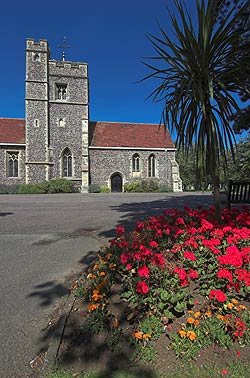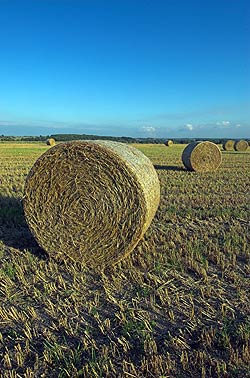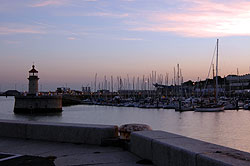Nikon AF-S 12-24mm f/4 DX G ED
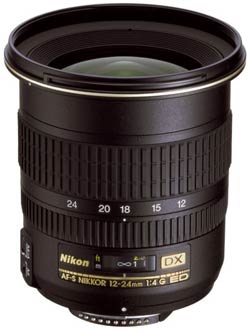 Specification
Specification
- Focal length 12-24mm
- Aperture f/4
- Angle of view
- Filter size / type 77mm
- Construction Elements/groups 11 elements in 7 groups
- Focusing type Internal SWM
- Closest focus 0.3m
- Weight 0.485kg
- Dimensions (Dia x length) 82.5x90mm
- Mounts available Nikon
- Tripod bush No
- Price (SRP) £899.99
Build and Handling
This lens is smaller than you would expect, especially if you have used fastish wide-angle lenses on a 35mm film body. In fact, it is not a lot bigger than the 18-70mm kit lens that Nikon make in the same DX format. The filter size of 77mm is a popular one and the lens cap is Nikon’s later version with inner grips to enable use of the cap with the supplied lens hood in place. Immediately in front of the mount is a distance window and the side of the barrel at this point carries the M/AF switch, a well-made and positive affair.
A narrow (12mm) manual-focussing ring is next up, and it can override the autofocus without switching. The zoom ring, marked at 12, 15, 18, 20 and 24mm, then occupies forty percent of the barrel with the lens ending in a six millimetre flange on which the petal style hood is mounted with a positive click bayonet. The autofocus is totally silent and fairly quick, with the manual ring only needing some 50mm of movement through the entire range.
Zooming requires less than a quarter of a turn of the ring to get from wide to even wider!
If you are intending to use a filter system on this lens, you will need one that is at least 100mm across or more to avoid vignetting and the Cokin Z-Pro holder did not encroach on the frame at the horizontal, although did just come into play when set on the diagonal.
Optical Quality
We used this lens on a couple of occasions before ever putting it on the test rig. The results were impressive! Formally testing it showed why. The only thing we can say about it is that the results are outstanding! There is a slight pincushion effect throughout the range, but it is only slight.
Chromatic aberration is so well controlled as to be virtually immeasurable in the centre and could not be seen by the naked eye at the edges. For pure resolving power it goes straight into the top three that we have tested to date, especially at the wide end. The longer end is no slouch either!
The nice thing about it is that the lens performs well wide open, gets better with a stop or so, and then holds up well as the aperture closes down.
|
|
| 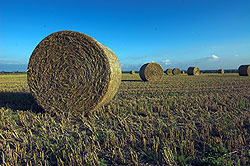 1/500sec at f/6 and 16mm |
Click on each comparision photo below to view full size versions
Below is our lens test data. To find out how to use these graphs look at this article: How we test lenses
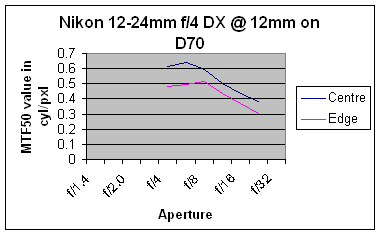
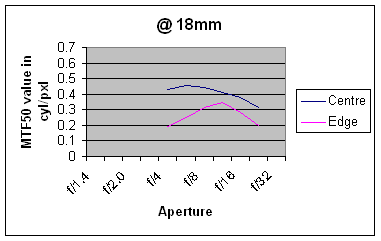
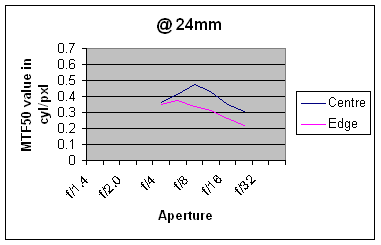
Verdict
Nikon were the first to produce a dedicated ultra wide angle lens for their cropped sensor cameras and they obviously put all their experience of both SLR lenses and wide angle for smaller sensor (Coolpix) lenses to full use. Despite some more recent very wide contenders, this offering from Nikon still looks like the Rolls-Royce of the pack. Although you will have to pay for it, if you want the ultimate performance for your cropped sensor, this is the lens to have.
In summary the main positive points of the Nikon AF-S 12-24mm f/4 DX G ED are:
![]() Superb optical quality
Superb optical quality
![]() Compact and well built
Compact and well built
![]() Silent autofocus
Silent autofocus
Negative points are:
![]() Price
Price
![]() Slight pincushion throughout (Being picky!)
Slight pincushion throughout (Being picky!)
Check the latest price of the Nikon AF-S 12-24mm f/4 DX G ED here
Test by Ian Andrews www.wildaboutkent.co.uk
I've been using it to make my living for over a year and a half with no regrets.
Good in the center wide open (infinity) becoming excellent by 5.6. Outstanding at f8 center, very good in the corners. Better at the widest end, where it needs to be. Only defect, at 12mm slight softness in extreme corners on DX format at near distances that is minimal by f11, and your clients will never notice. At 14-18mm just amazing.
I had a Tokina 12-24 for about a year and was very impressed but decided to bite the financial bullet and buy the Nikkor. Outstanding is the only way to describe this lens and beats the Tokina in almost every situation. Performance is simply amazing when stopped down to F9.
Add your message
Please login here or if you've not registered, you can register here. Registering is safe, quick and free.
photodo Stats
428 MTF tests
74 in-depth photodo reviews
100+ users join each day
Help the lens community by reviewing or rating a lens today via our lens search
Latest Lens Reviews
- Chinon 28mm f/2.8 Vintage Lens Review
- Canon EF 70-200mm f/4L IS II USM Lens Review
- Samyang AF 85mm f/1.4 EF Review
- Sigma 70mm f/2.8 DG Macro Art Review
- Samyang AF 24mm f/2.8 FE Review
- Meike 50mm f/1.7 Review
- Tamron 70-210mm f/4 Di VC USD Review
- Lensbaby Burnside 35mm f/2.8 Review
- Asahi Super Takumar 50mm f/1.4 Review
- Asahi Super-Multi-Coated Takumar 135mm f/3.5 Review
